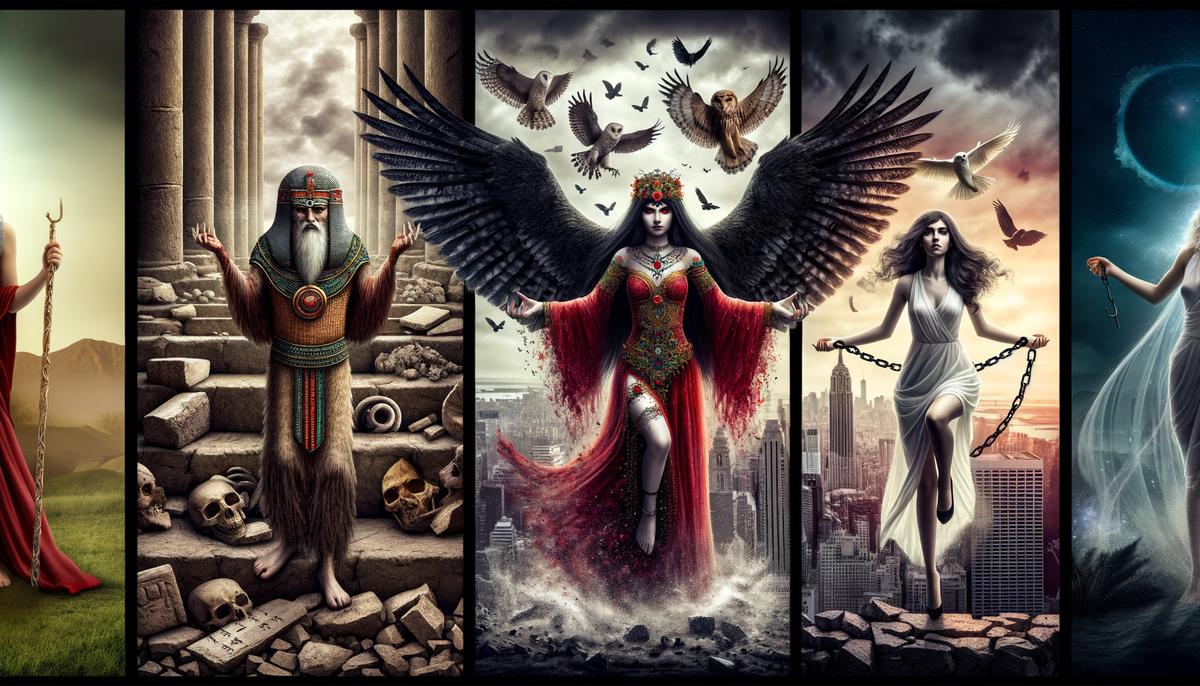Lilith's tale spans centuries, weaving through ancient myths and modern interpretations. Her story, originating in ancient Mesopotamia, has evolved significantly, reflecting changes in cultural attitudes and societal norms. From a feared storm demon to a symbol of female empowerment, Lilith's story is rich with intricacy and allure.
Origins and Early Depictions
Lilith's roots extend back to ancient Mesopotamia, where she was known as "Lilitu" among the Sumerians, Babylonians, and Assyrians. She was initially depicted as a storm demon, responsible for diseases and deaths, particularly those of infants.
In the Sumerian epic "Gilgamesh and the Netherworld," a character believed to be Lilith is mentioned. Gilgamesh encounters her living inside a sacred tree, defeats her, and she flees to the wilds.
Lilith's appearance varied in different tales. She might be portrayed as:
- A winged owl-like creature
- A woman with wings and owl's feet
- A demon inhabiting trees
Hebrew texts began incorporating Lilith into their stories, refining and intensifying her character. The Book of Isaiah lists her among unclean animals, and she's mentioned in plural form in the Dead Sea Scrolls.
By the 8th century, in the "Alphabet of Ben Sira," Lilith's origin story took a dramatic turn. She was portrayed as Adam's first wife, created from the same earth. When Adam insisted on dominating her, Lilith rebelled, uttered the sacred name of God, and fled.
Medieval folklore depicted Lilith as a seductress who drained men's life force, making her an early version of a femme fatale vampire. She became a symbol of male fear and desire, a creature of the night.
Lilith's legend shaped many superstitions. Amulets bearing the names of angels who confronted her were used for protection. By Goethe's 1808 "Faust," she had become an essential figure in vampire lore, the queen of darkness.
In modern depictions, while retaining her terrifying aspects, Lilith is often portrayed as a breathtakingly beautiful woman, capable of stirring both desire and fear.
Lilith in Jewish Tradition
The "Alphabet of Ben Sira," a medieval Hebrew text, propelled Lilith into Jewish lore as Adam's first wife. Unlike Eve, Lilith was made equal to Adam, which led to tension. She refused to lie beneath Adam during their union, insisting on being his equal.
"Why must I lie beneath you?" she asked. "I also was made from dust, and am therefore your equal."
Lilith's defiance reached its peak when she invoked the ineffable name of God, giving her the power to escape Eden. God dispatched three angels—Senoy, Sansenoy, and Semangelof—to retrieve her. When she refused to return, she was punished with the death of one hundred of her children every day.
This tragedy drove Lilith deeper into vengeance, cementing her hatred for humanity, especially children. Jewish tradition painted her as a child-killing witch, a demon who prowls at night. Amulets inscribed with the names of the three angels became common talismans for protection against her influence.
The Dead Sea Scrolls mention Lilith in plural form, suggesting a generalized force of darkness. Her characteristics grew complex over time, associating her with:
- The owl
- Nocturnal hunts
- Seduction
- Demon generation
Lilith's defiance and subsequent demonization raise questions about the nature of rebellion and punishment, particularly in a patriarchal context. Her story endures as a symbol of the intricacies of power, autonomy, and gender dynamics.
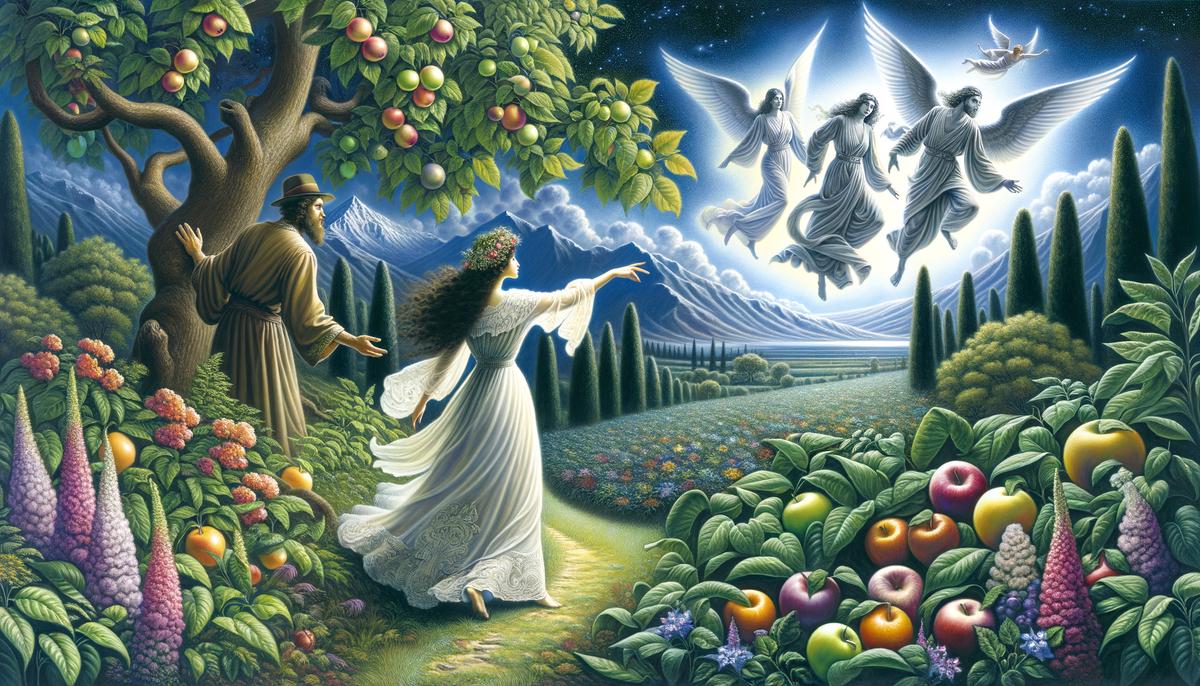
Lilith as a Feminist Icon
In modern times, Lilith's story has undergone a remarkable transformation. Once vilified as a demonic figure, she has been reinterpreted as a symbol of female independence and empowerment. Her defiance against subservience, as portrayed in the "Alphabet of Ben Sira," serves as the foundation for this reinterpretation.
Lilith's refusal to accept a life of subordination resonates deeply in a world where gender equality remains a contentious issue. Feminist literature has embraced her as a counter-narrative to the submissive roles often assigned to women in religious and cultural texts.
The rise of feminist movements in the 20th and 21st centuries has cemented Lilith's place as an icon of female empowerment. In Jewish feminist literature, she is often depicted as a misunderstood heroine who dared to demand equality.
Contemporary art, literature, and pop culture have reimagined Lilith in various empowering roles. She represents the duality of womanhood—capable of being both:
- Nurturing and destructive
- Submissive and rebellious
- Beautiful and terrifying
Lilith challenges deeply ingrained stereotypes about women's roles and capabilities. By embracing her story, modern feminists underscore the ongoing struggle for equality and respect, reminding society that defiance against injustice can be a powerful force for change.
Through Lilith, we learn that the stories we tell shape our understanding of gender dynamics. Her legend continues to inspire resilience and rebellion against the confines of a patriarchal world.
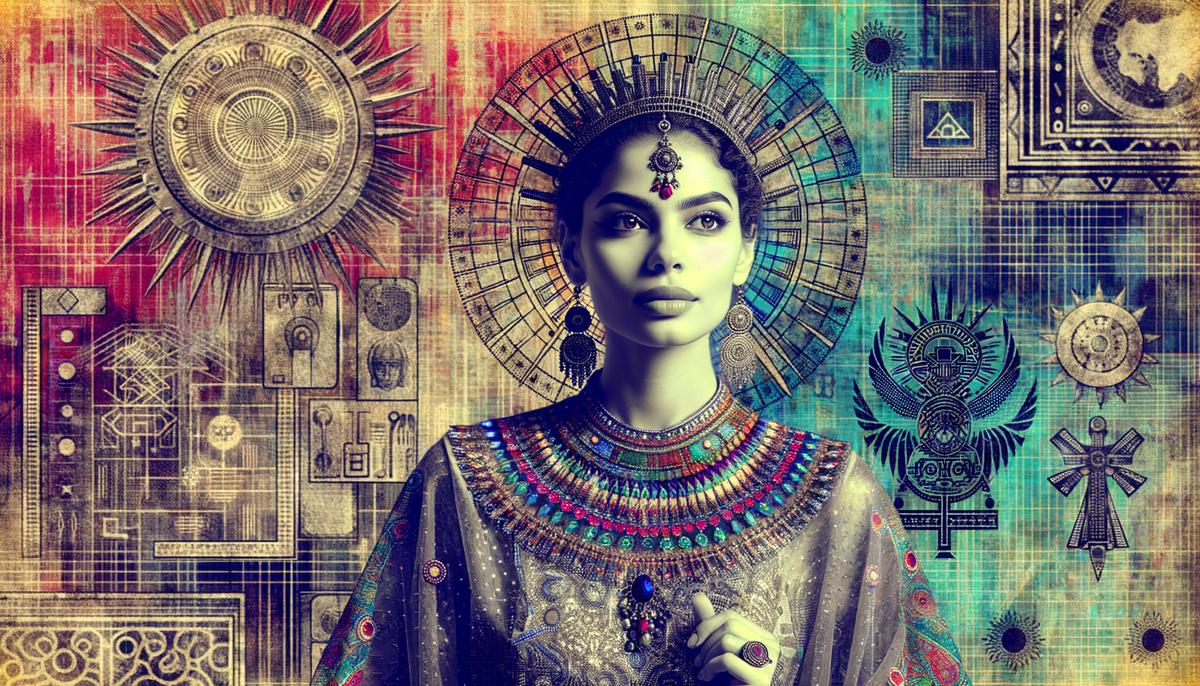
Lilith in Modern Vampire Lore
In modern vampire lore, Lilith's transformation from demonic entity to the first vampire is a captivating journey. Her evolution began as folklore and religious interpretations merged over centuries, creating a figure both terrifying and alluring.
Medieval Europe saw Lilith's ability to seduce men and drain their life force morph into distinctly vampiric traits. She became a blood-sucking entity, moving through shadowy forests or ancient towns under cover of night, seeking easy prey. This transformation set the stage for her emergence as the first vampire—a concept solidified by medieval texts like "The Alphabet of Ben Sira."
Lilith's vampiric characteristics included:
- Seducing men to steal their blood and vitality
- Preying upon the weak, lonely, and vulnerable
- Embodying one of the earliest archetypes of the femme fatale
As Gothic Literature gained popularity, Lilith's image became intertwined with the growing vampire genre. Goethe's "Faust: The First Part of the Tragedy" brought her further into the spotlight, depicting her as a creature of sublime beauty and deadly intent.
In the cinematic world, Lilith's figure recurs, embodying the fusion of erotic allure and deadly danger. Films like "Queen of the Damned" and various Dracula retellings often reference her traits. Her role as the "Mother of Vampires" surfaces in different guises, maintaining her central position in vampiric origins.
In the "Buffy the Vampire Slayer" series, she's credited with creating the Turok-Han, an ancient breed of vampires. This depiction solidifies her as the Mother of Vampires, tying her mythos directly to vampire hierarchies in contemporary pop culture.
Lilith features prominently in various novels, graphic novels, and games. These adaptations often blend her ancient traits with new dimensions, presenting her as both villain and anti-hero. In Neil Gaiman's "The Sandman," she appears as a multifaceted character whose actions span beyond mere villainy. Video games like "Diablo IV" showcase her as a complex antagonist, wielding psychological power over men.
Modern portrayals highlight her autonomy and defiance, making her a symbol of feminine power and independence. As stories progress, so does Lilith, shifting from a bloodthirsty demon to a nuanced character embodying rebellion and seduction. Through these adaptations, she influences the creation of new vampire characters who inherit her characteristics—seductiveness, autonomy, a thirst for blood—cementing her legacy further.
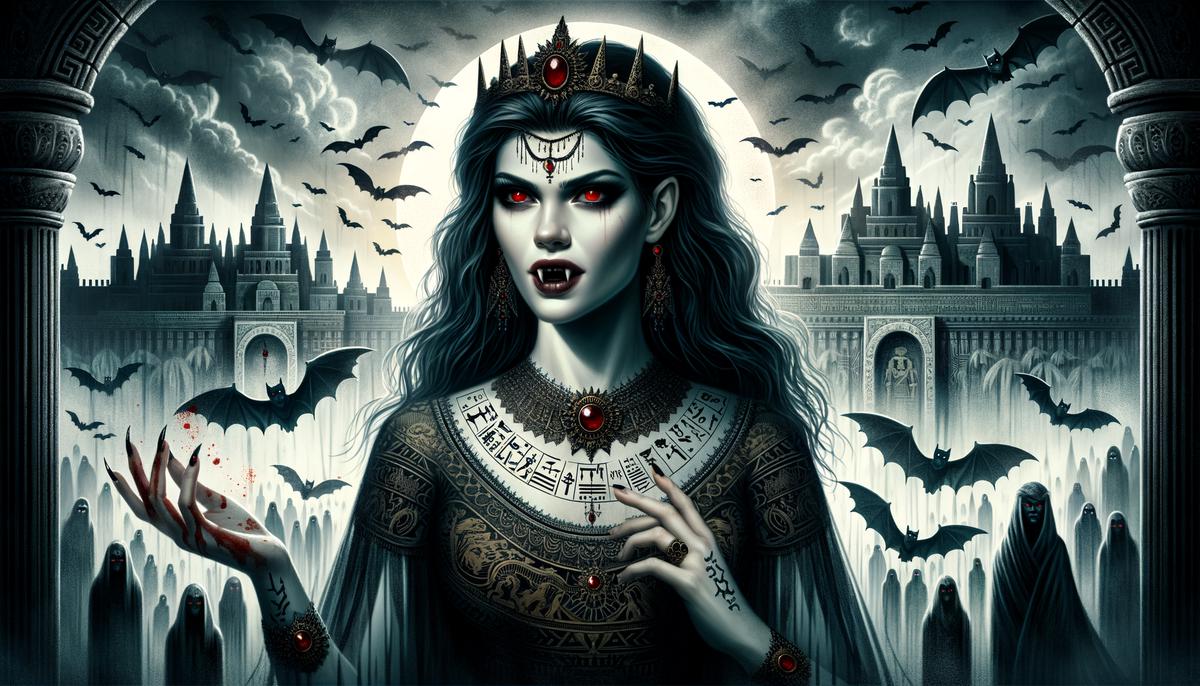
Lilith in Popular Culture
In modern popular culture, Lilith's image has flourished into a captivating blend of mythology, horror, and feminist iconography. She appears repeatedly across various media, often bearing the trademarks of her ancient depictions while evolving to fit contemporary stories.
Video Games
In video games, Lilith emerges as a powerful antagonist. "Diablo 4" showcases her as the Daughter of Hatred, manipulating the mortal world for her ends. Her design, with iconic horns and blood petals, blends the terrifying with the beautiful, staying true to traditional depictions while adding a modern, sinister twist.
Movies and Television
Movies and television have also tapped into Lilith's multifaceted mythology. In "Supernatural," she appears as a significant demon and arch-enemy for the show's protagonists. "The Chilling Adventures of Sabrina" portrays her as Madam Satan, a complex character maneuvering the worlds of Hell and Earth, emphasizing her cunning and seductive prowess.
Literature and Graphic Novels
Books and graphic novels provide fertile ground for more in-depth explorations of Lilith. In Neil Gaiman's "The Sandman," she appears as an enigmatic figure connected to the Dreaming's vast mythos. Isaac Bashevis Singer's stories and various feminist retellings have re-examined Lilith's story through the lens of gender studies, casting her either as a victim of patriarchal oppression or as a symbol of rebellious independence.
Pop Culture, Music, and Art
In pop culture, music, and art, Lilith's symbolism is equally pervasive. She's celebrated in darker genres of music and embraced in various forms of art, from classical depictions to modern illustrations portraying her as a powerful, often misunderstood femme fatale.
Through these various media, Lilith's portrayal has transcended her traditional role as a demonic figure. She's become a mirror reflecting cultural shifts regarding power, gender, and rebellion. Modern adaptations often highlight her autonomy and defiance, celebrating her as a figure who chooses her path despite dire consequences.
"Lilith embodies the fusion of beauty and danger, a timeless archetype that continues to captivate audiences across all forms of media."
By examining these representations, it's clear how each medium brings something unique to Lilith's expansive lore. Yet, despite diverse portrayals, core elements remain—strength, beauty, rebellion—ensuring Lilith's story continues to captivate the imagination across generations.
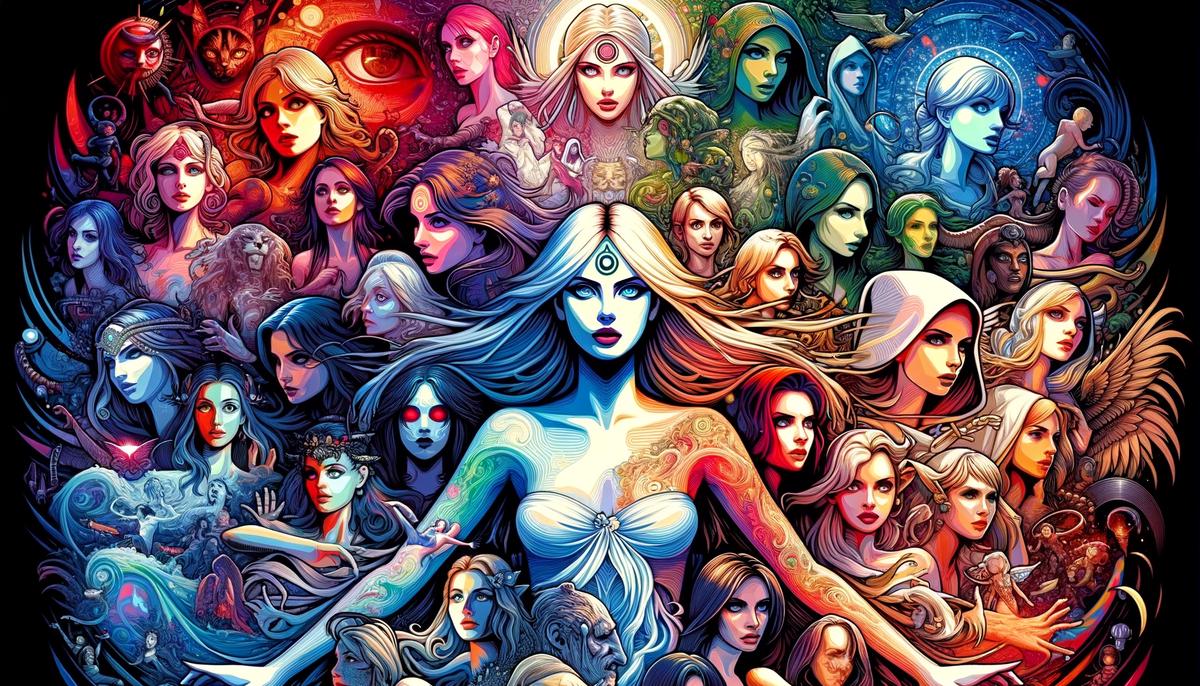
Lilith's enduring legacy as a figure of rebellion, beauty, and terror continues to captivate. Her transformation from an ancient demon to a modern feminist icon underscores the timeless nature of her story. Lilith remains a powerful symbol of defiance and autonomy, resonating deeply with those who challenge the confines of a patriarchal world.
Some key aspects of Lilith's modern significance include:
- Symbol of female empowerment
- Representation of sexual liberation
- Icon of rebellion against societal norms
- Archetype of the dark feminine in psychology1
As we continue to reinterpret and reimagine Lilith, her story serves as a reminder of the complexity of human nature and the power of challenging established narratives. Her journey from vilified demon to celebrated icon reflects our evolving understanding of gender, power, and individuality in society.

